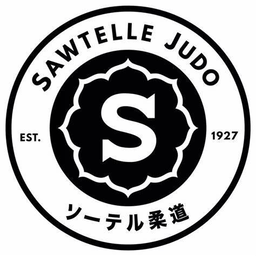Sawtelle-Its History
The area we know as Sawtelle was part of land the Mexican Governor of California granted to Maximo Alanis called “Rancho San Jose de Buenos Aires” in 1853. With the arrival of the Santa Fe Railroad from the east in 1885, a land boom began, with acreage now selling for $150-$200 an acre. In 1896, the Pacific Land and Water Company purchased some subdivisions of the Rancho for as low as thirty-five cents an acre. One of the subdivisions, the Artesian tract of the Barrett Villa, land now part of present-day Sawtelle. It was three hundred acres of barley fields bounded on the east by the Southern Pacific Railroad tracks (now Sepulveda Blvd.), on the west by Federal Avenue, on the north by the Old Soldiers’ Home (now the Veterans Administration Greater Los Angeles Healthcare Center on Wilshire Blvd.) and on the south by La Grange Ave.

Map of Sawtelle
(Map image courtesy of Google Maps under 2110 Corinth Ave., Los Angeles)
Back then, Sawtelle Blvd. was known as La Calle Cuarta. Santa Monica Blvd. was called Oregon Blvd. Present day Cotner Ave. was known as 1st St., Pontius was 2nd St., Beloit was 3rd St. and so on. With the construction of the San Diego Freeway in the mid-1950’s, the eastern portion of the Sawtelle neighborhood was lost to industrial redevelopment and apartment complexes.
The Pacific Land and Water Company developed a town originally called Barrett, after Gen. A. W. Barrett, the then head of the veterans’ home. When the firm attempted to secure a post office for the new town, the postal authorities objected to the name “Barrett” on account of its similarity to Bassett, California. But, in 1899, after the postal service objected to the town’s current name of Barrett which resembled another Los Angeles town on the east side called Bassett, the town was officially renamed Sawtelle. W. E. Sawtelle was the manager of the Pacific Land Company at that time.
The Barrett Villa was a residential area for relatives of the Old Soldiers’ Home, built in 1888 and workers employed there. By 1900, over two thousand retirees resided in the “One of the largest, handsomest and most attractive of all public establishments” called the Home. Directly to the south of the Home lay a large agricultural district with excellent climate, soil, access to local water and markets.

Sawtelle and Santa Monica Blvds., circa 1890
(Photo courtesy of Sawtelle, Los Angeles-Wikipedia)
In 1906, with a population of 1400, grocery stores, a bank, a drug store, a clothing store, a fire station, two schools and a jail, the city of Sawtelle was incorporated. The area grew so rapidly that the city was finally became part of the City of Los Angeles due to access to limited water supplies and annexation pressure from Los Angeles city government by 1922. By 1929, the city granted this area recognized as West Los Angeles.
By 1922, Sawtelle was incorporated into the City of Los Angeles.

Taken in 1926, we see an inbound car about to pick up some passengers at
Sawtelle Blvd. We are looking west down Santa Monica Blvd.

Present day intersection of Sawtelle and Olympic Blvds.
Beginning in 1910, attracted by many agricultural opportunities, many Japanese immigrants settled in the area. By the 1930’s, the Japanese community grew to over 1000, many employed as gardeners and agriculturists. Sawtelle Blvd. was lined with local mix of Japanese and Hispanic businesses from groceries, drug stores and nurseries. Some of those same nurseries are still in business today. Along with the businesses, social and community organizations formed; Christian and Buddhist churches, the West Los Angeles Community Center, and the Japanese Institute of Sawtelle.
Near to the seashore that eased nostalgia for their homeland, the mild temperatures and rich soil ideal for working close to nature and a cooperative network by the local Kenjinkai were attributes attracting the early Issei to Sawtelle, ソーテル or so-te-ru, in the 1910s. From 1920 to 1925, the town’s population increased from 3,500 to 10,700, primarily due to the westward migration of the movie industry from New York, the influx of Nikkei farmers and merchants, and later the establishment of the University of California at Los Angeles (UCLA). With the growth of neighboring communities in Westwood, Bel Air, and Brentwood, the demand for Nikkei gardeners, nursery workers, and domestics increased, and the area became ideal for raising families. (Preserving Japantowns-Sawtelle)
The auditorium or community hall, built in 1940, was watched over by the American Red Cross during the war, and served as a hostel for returning Japanese Americans after World War II. The facility was remodeled to include a small kitchen in 1964 and renovated again in 1978 to its present configuration. After over 80 years, the Japanese Institute of Sawtelle continues to offer Japanese language classes on weekdays and weekends, and host speech contests and undokai (sports day) annually. The WLA Japanese American Community Center, an entity established in 1986 to coordinate the community activities, provides Dojo space for three martial arts groups, coordinates a senior lunch program, facilitates health and wellness classes, and offers cultural arts classes.
Becoming a part of greater Los Angeles and renamed West Los Angeles (WLA) in 1929, “Sawtelle”” still commonly refers to the commercial corridor of Japanese businesses and restaurants along Sawtelle Blvd, between Pico and Santa Monica Boulevards, and the residential neighborhood surrounding it. By 1941, Sawtelle boasted 26 nurseries/florist shops, 8 boarding houses, 8 gas stations/garages, 4 churches, 3 grocery stores, 5 shops, 4 barbers, 2 sewing schools, 1 beauty salon, and 1 Japanese language school and community hall. Today, only a handful of pre-World War II historic sites remain, but an influx of Japanese restaurants, markets, and the J-pop influence of the Giant Robot store and eatery provide a new identity, often referred to as “Little Osaka.” (Sawtelle Blvd., History-website)
For “The Road to Sawtelle Judo Dojo, Part 1”
Comments function disabled


Leave a Reply